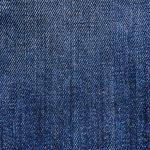Are you ready to dive into the world of cross stitch on linen fabric? Get your needles and hoops ready because this article will guide you through the process of preparing your linen fabric for cross stitching.
From choosing the right fabric to transferring the pattern and starting your stitches, we’ve got you covered.
So, let’s get started and turn that plain linen into a beautiful work of art!
Table of Contents
Choosing the Right Linen Fabric
To choose the right linen fabric for your cross stitch project, you’ll want to consider the thread count and weave. Linen fabric, known for its durability and natural beauty, offers many benefits for cross stitch enthusiasts.
With its high thread count, linen fabric provides a smooth and even surface for your stitches. This ensures that your finished piece will have a professional look. Additionally, linen fabric is breathable and absorbs moisture, which helps to prevent mold and mildew from forming on your cross stitch.
When it comes to caring for your linen fabric, there are a few tips to keep in mind. First, always prewash your linen fabric before starting your cross stitch project. This helps to remove any sizing or chemicals that may be present, ensuring that your fabric is clean and ready to use.
Secondly, avoid using bleach or harsh chemicals when washing your linen fabric, as this can weaken the fibers and cause them to break. Instead, opt for a gentle detergent and lukewarm water.
Finally, when drying your linen fabric, it is best to air dry it rather than using a dryer. This will help to preserve the fabric’s shape and prevent any shrinkage.
Washing and Prepping the Linen Fabric
Make sure you’re gently washing and prepping your linen before starting your cross stitch project. This is an important step to ensure that your fabric is clean, smooth, and ready for stitching. Here are three key steps to follow:
-
Preventing color bleeding: Before washing your linen, check the label for any specific instructions. To prevent color bleeding, it’s best to wash the fabric separately or with similar colors. Fill a basin or sink with lukewarm water and add a mild detergent. Gently agitate the fabric in the water for a few minutes, then rinse thoroughly to remove any soap residue.
-
Drying techniques: After washing, avoid wringing or twisting the fabric, as this can cause wrinkles and distort the weave. Instead, gently squeeze out the excess water and lay the fabric flat on a clean, dry towel. Roll up the towel, pressing lightly to absorb the moisture. Unroll the towel and carefully remove the fabric, then lay it flat to air dry.
-
Ironing techniques: Once the fabric is dry, it may have some wrinkles. To remove these, set your iron to a low heat setting and iron the fabric on the reverse side. Avoid using steam, as it can leave water marks on the fabric. If needed, you can also use a pressing cloth to protect the fabric while ironing.
Transferring the Cross Stitch Pattern Onto the Linen Fabric
When transferring your cross stitch pattern onto the linen fabric, it’s important to choose a suitable transfer method and take precautions to avoid damaging the fabric.
There are various transfer methods available, such as using a water-soluble pen, heat transfer paper, or a lightbox.
Be sure to test the transfer method on a scrap piece of fabric first to ensure it doesn’t cause any damage or staining.
Suitable Transfer Methods
First, you’ll need to choose from a variety of suitable transfer methods for your cross stitch design on linen fabric. Here are three options to consider:
-
Iron-on transfers: These transfers are printed onto special paper that can be easily transferred onto the fabric using heat from an iron. Simply place the transfer paper onto the fabric, apply heat, and the design will transfer onto the fabric.
-
Water-soluble transfer pens: These pens allow you to draw your design directly onto the fabric. The ink will dissolve in water, leaving behind a clear and precise design for you to stitch.
-
Carbon paper: Using carbon paper, you can trace your design onto the fabric. Place the carbon paper between the design and the fabric, and then trace over the design with a pencil or stylus. The pressure will transfer the design onto the fabric.
Remember to choose the transfer method that best suits your preferences and the complexity of your design.
Avoiding Fabric Damage?
To prevent any potential damage, be careful not to apply excessive heat when using iron-on transfers on your design. Heat can cause fabric fraying and discoloration, ruining your project.
When applying the transfer, use the lowest heat setting possible and avoid keeping the iron in one spot for too long. Move the iron gently and evenly across the design, ensuring that the heat is evenly distributed.
It’s also important to protect the fabric by placing a thin cloth or parchment paper between the iron and the transfer. This will create a barrier and prevent direct contact between the heat and the fabric, reducing the risk of fraying and discoloration.
Hooping and Securing the Linen Fabric
When hooping and securing your linen fabric for cross stitch, it’s important to pay attention to two key points: tension and smoothness, and proper fabric positioning.
Achieving the right tension and smoothness of the fabric will ensure that your stitches are neat and even.
Additionally, proper fabric positioning within the hoop will prevent distortion and ensure that your finished piece looks professional.
Tension and Smoothness
Achieving the perfect tension and smoothness of your linen fabric is essential for a successful cross stitch project. To achieve even tension and prevent fabric puckering, follow these steps:
-
Begin by gently ironing your linen fabric to remove any wrinkles. This will ensure a smooth and even surface for your cross stitch design.
-
When stitching, make sure to keep an even tension on the fabric. Avoid pulling too tightly, as this can cause the fabric to pucker and distort the stitches.
-
Use a hoop or frame to secure the fabric while stitching. This will help maintain the tension and prevent the fabric from shifting or becoming loose.
By following these steps, you can ensure that your linen fabric is prepared properly, allowing for a smooth and even cross stitch project without any puckering or distortion.
Happy stitching!
Proper Fabric Positioning
Make sure you position your fabric properly before starting your project to ensure optimal results.
Proper fabric tension is essential in cross stitch to avoid fabric puckering and achieve smooth and uniform stitches.
Begin by cutting your linen fabric with clean, straight edges.
Next, fold the fabric in half vertically and horizontally to find the center.
Align the center of the fabric with the center of your cross stitch pattern.
Secure the fabric using a hoop or frame, making sure it is drum-tight.
Avoid overstretching the fabric, as this can distort the stitches and cause puckering.
Once your fabric is positioned correctly, you can begin stitching with confidence, knowing that your project will turn out beautifully.
Selecting the Right Thread and Needle for Linen Fabric
To select the right thread and needle for linen fabric, you should consider the thickness and weave of the fabric. Here are three things to keep in mind:
-
Thread thickness: Linen fabric tends to have a looser weave compared to other fabrics, so it’s important to choose a thread that is not too thick. A thinner thread will glide through the fabric more easily and create a neater stitch. Opt for a thread that matches the weight of the fabric, such as a size 28 or 30 thread.
-
Needle size: When stitching on linen fabric, it’s essential to use a needle that matches the fabric’s thickness. A needle that is too big can distort the fabric, while a needle that is too small may cause the thread to break or snag. For most linen fabrics, a size 24 or 26 needle is appropriate.
-
Fabric tension: Linen fabric can be more prone to distortion if not properly tensioned. To ensure even stitches and prevent puckering, it’s crucial to choose the right fabric tension. Avoid pulling the fabric too tight or leaving it too loose. Find a balance where the fabric is taut but still allows the needle to glide through smoothly.
Starting Your Cross Stitch on Linen Fabric
When starting your project on linen, remember to position your needle at the top left corner of the fabric. This is where your pattern will begin, and it will ensure that your design is centered and aligned properly.
Before you start stitching, it’s important to transfer your pattern onto the linen fabric. You can do this by using a transfer pen, tracing paper, or even by using a lightbox and tracing the design directly onto the fabric. Make sure to follow the manufacturer’s instructions for transferring the pattern, as some methods may require heat or water to set the design.
Once your pattern is transferred, it’s important to take care of your linen fabric to ensure that it stays in good condition throughout your project. Linen is a delicate fabric, so it’s best to hand wash it with a mild detergent and cold water. Avoid wringing or twisting the fabric, as this can cause it to stretch or warp. After washing, gently press the fabric with a warm iron to remove any wrinkles.
Finishing and Care Tips for Cross Stitch on Linen Fabric
Once you’ve finished your cross stitch on linen fabric, remember to gently hand wash it with a mild detergent and cold water to keep it in good condition.
Here are some finishing techniques and care tips to help preserve your linen fabric:
-
Blocking: After washing, lay the fabric flat on a clean towel and gently stretch it to its original shape. Use rust-proof pins to secure the corners and sides. Allow it to air dry completely before removing the pins.
-
Ironing: To remove any wrinkles or creases, iron your linen fabric on the reverse side using a low heat setting. Place a clean cloth or pressing cloth over the fabric to protect the stitches and prevent them from getting flattened.
-
Storage: Store your finished cross stitch in a cool, dry place, away from direct sunlight and moisture. Roll it up with acid-free tissue paper to prevent any creases or folds. Alternatively, you can frame it or place it in a protective sleeve to display and protect your work.
Conclusion
In conclusion, preparing linen fabric for cross stitch is a straightforward process that can greatly enhance the final result of your project. By choosing the right linen fabric, washing and prepping it correctly, and transferring the pattern accurately, you can set yourself up for success. Hooping and securing the fabric properly is also important to ensure that your stitches are even and the fabric stays in place. Additionally, selecting the appropriate thread and needle will help you achieve the desired look for your cross stitch design. Lastly, don’t forget to follow the finishing and care tips to ensure the longevity of your work. Happy stitching!
- Does Chiffon Fabric Stink - July 15, 2025
- Does Chiffon Fabric Affect the Economy - July 15, 2025
- Does Cotton Fabric Have a Nap - July 15, 2025




